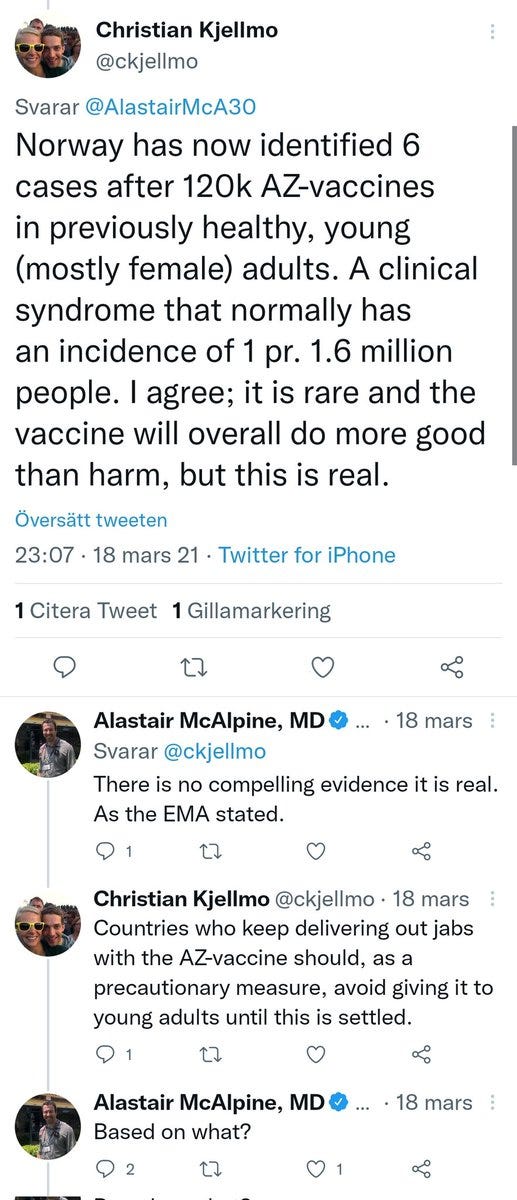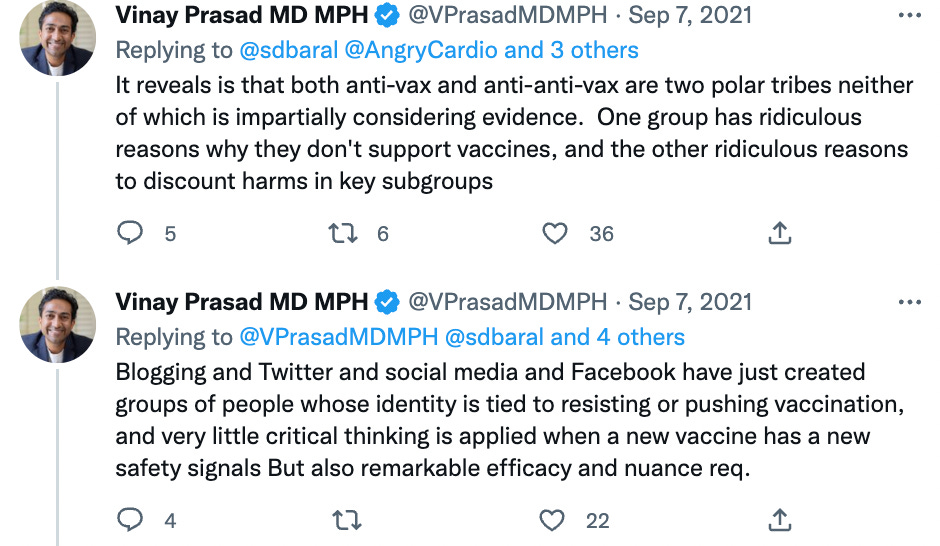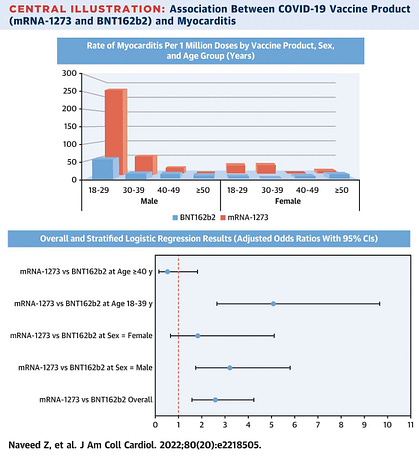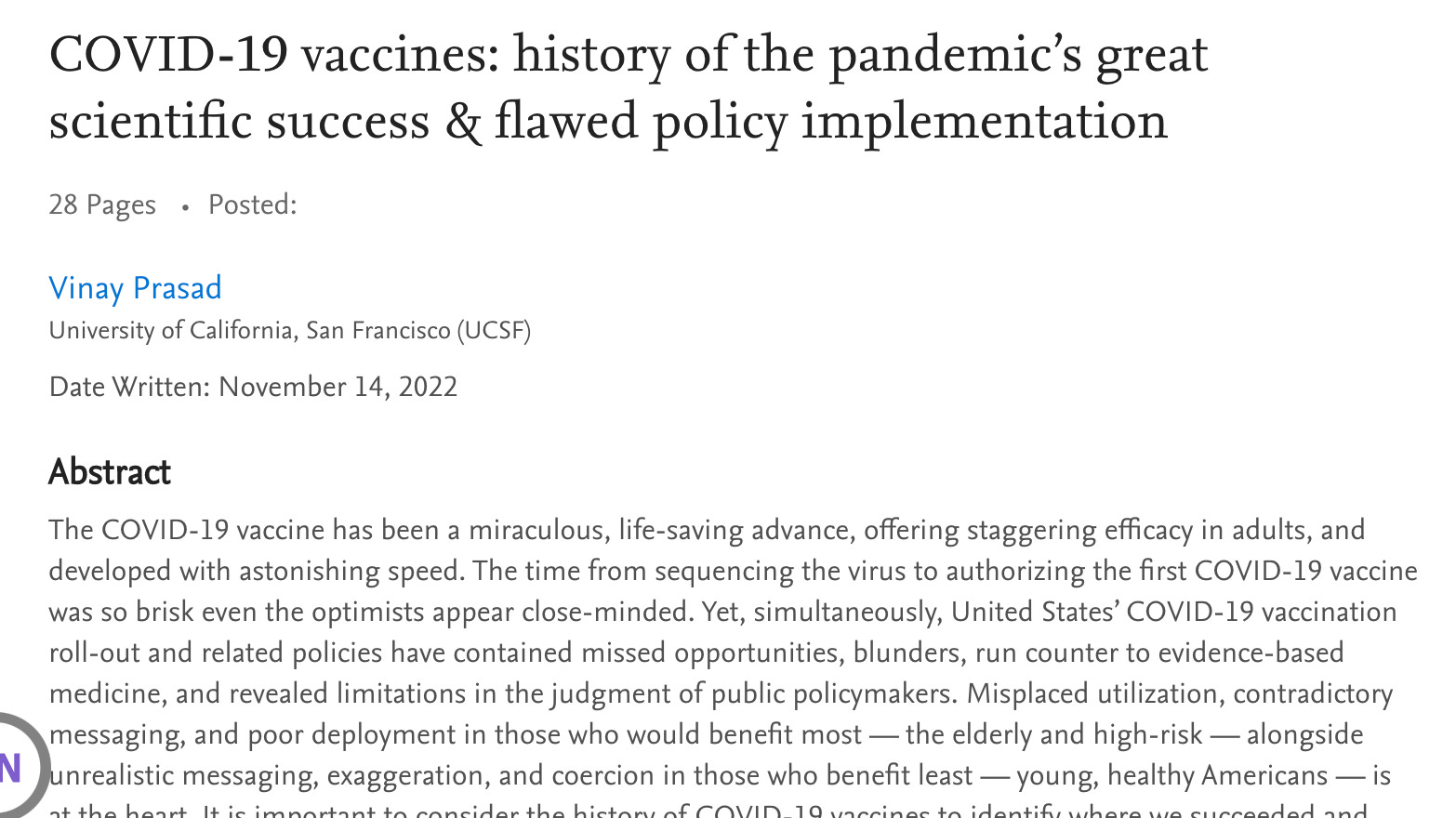The Misinformation Police Strike Out
November 15 | Posted by mrossol | Censorship, Critical Thinking, Health, ScienceSource: The Misinformation Police Strike Out – by Vinay Prasad
Science is difficult. Many popular theories turn out to be incorrect, and some ideas— initially thought implausible— are ultimately vindicated. Of course, let’s have perspective: most crazy ideas are, in fact, crazy, but what is true and what is consensus is not always the same. Dr. John Mandrola wrote on this topic brilliantly last month noting, “uncertainty always prevails over certainty—even when experts feel there is a consensus.”
It is easy to identify something in medicine that sounds fishy, but very hard to know what is indisputably wrong. This is especially true in the heat of the moment, when emotions are heightened, and when politics intersect with science.
That is why wise scientists are concerned that policing misinformation (particularly using blunt modern tools: censorship, shadow-banning and de-throttling) is dangerous. Policing is different than debating. It’s different than rebutting. It’s using the brute force of the modern algorithmic platforms to slow the spread of your opponent’s ideas. I worry it has been misused.
The COVID19 pandemic reveals the limitations and arrogance of science influencers. Pre-covid they were often on target. In a world of reiki, jade eggs, supplements and cupping, it was easy for health misinformation ‘experts’ to make their mark debunking popular, unproven remedies. Why? Because these things are obvious nonsense, and you don’t need to know much to know that.
But these ‘experts’ were woefully unprepared for the pandemic. Lockdowns, the possibility of lab leak, school closure, masking adults, masking kids, 5 vs 10 days of quarantine, and who should get how many doses of vaccine and when— are complex technical questions that require deep knowledge of biomedicine, trials, trade-offs, statistics, and more.
Science debunkers and influencers—who often don’t work at universities, don’t publish research, don’t understand statistics, don’t peer review for journals, don’t have a good sense of the pre-test probability of interventions, and/or don’t have deep technical understanding of drug regulation—tried to crusade against misinformation, but they made many mistakes. This would be okay if they were merely debating, but repeatedly they sought to use the tools of the platform to extinguish ideas they disliked.
Interestingly, influencers almost universally share the same political views— mixing debunking with far left socio-political positions and open endorsement of Democratic candidates. They draw upon tactics used in politics and the culture war and import them to medicine: opposing ideas are not just wrong, they are dangerous and harmful. We can’t fight speech with speech, we have to censor, label, de-platform, and down-throttle.
Science influencers have chosen to label fellow doctors and professors who disagreed with them as “anti-science,” when, ironically, it was their rhetoric which reflected an inability to understand the nuance inherent in science. Science influencers, in their zeal, stifled debate on how to give vaccines more safely. They thwarted efforts to run cluster randomized trials of masking.
Years ago, in a piece in Scientific America, John Horgan urged debunkers to spend less time on the soft targets— cupping— and more time on the hard ones— mammography. Ironically, when influencers turned to hard targets during the pandemic—such as vaccine induced thrombocytopenia and thrombosis, mRNA myocarditis, late gadolinium enhancement, and the tradeoff from boosting after infection— they were woefully unprepared to think about these issues. Perhaps Horgan’s message should have been simpler: debunk what you understand and know your limits.
Consider some examples
Recently an account called “unbiased science” (Of course, it is unbiased!) put out a video claiming the idea of immune debt— that avoiding infections through severe societal disruption for years makes us more susceptible to future infection is— is not true.
Unfortunately the social media debunker was in need of debunking:


Immunity debt is not a “made up term” Here is a list of references about immunity debt (also known as Immunity Gap) to share with those who may be confused regarding this term 1/ https://t.co/jbPIBRgbfb
Dr. Munro, a thoughtful student of evidence based medicine, details reference after reference showing the obvious: severe disruptions to travel and life, which reduced respiratory viruses for a year or two, might leave us more vulnerable to future respiratory viruses, as we lack immunity. This has been called “immune debt” in multiple peer reviewed articles.

It is easy to make a tiktok video, but harder to know what you are talking about. In another example— one where receipts matter— Jacob Gudiol points to a science influencer who originally denied the link between adenoviral vector vaccines and vaccine induced thrombocytopenia and thrombosis, only later deleting his tweet.



@AlastairMcA30 Norway has now identified 6 cases after 120k AZ-vaccines in previously healthy, young (mostly female) adults. A clinical syndrome that normally has an incidence of 1 pr. 1.6 million people. I agree; it is rare and the vaccine will overall do more good than harm, but this is real.
The truth is understanding passive surveillance systems is harder than debunking cupping. I knew that VITT was a serious concern for adenoviral vector vaccines, and said so at the time. Of course, the signal was real. Runaway platelet activation and clotting has essential no base rate (in the absence of heparin exposure); and, as such, all events are likely causal.
I urged the FDA to suspend authorization, at least in women under 50. It took the (pro corporate) FDA 1 year to come around to my thinking, but eventually they did, and deprioritized these products. This was only after needless harm to Americans.
The core error of science influencers is that they claim to fight tribalism and irrationality, but they are often as tribal and irrational as those they fight. I wrote in that same thread more than a year ago.
mRNA induced myocarditis
When it comes to mRNA induced myocarditis, science influencers did great damage. They prevented us from pursuing a middle ground. There were lots of things we could have done to minimize the adverse event, while preserving efficacy. Such as:
- Space out the doses (delay dose 2)
- Run RCTs testing lower doses in young people <40
- Ban Moderna in people <40
- Giving exemptions to young people who had and recovered from COVID19
- Avoid boosting a 20 year old man who had 3 doses and breakthrough
- Demand Pfizer report the post market troponin study (active surveillance) sooner
- Improve vaccine adverse event reporting systems
We wrote about many of these ideas in the summer of 2021, which the FDA and CDC failed to consider. A recent publication has a graphic that shows how we so easily could have improve this.
Instead, influencers kept chanting: COVID19 is worse than vaccines, or carries more myocarditis, without realizing that is a flawed framing. Every person on earth will eventually get COVID19 breakthrough. This was obvious since at least Provincetown in the summer of 2021, though there were earlier signs.
COVID19 might be less severe the more doses you get, but the first dose provides the bulk of the benefit and each subsequent dose has diminishing returns. In contrast, dose 2 of mRNA products have the highest rate of myocarditis, and there appears to be no floor to booster rates of myocarditis (~1/10k).
Thus, the optimal number of doses will likely vary by age, prior infection, and sex. A 20 year old man who got 1 dose of Moderna will DEFINITELY have more myocarditis if he gets dose 2 on day 28 and then COVID, versus if he just got COVID right then and there and skipped dose 2. Influencers could not contemplate these intricacies. The man is getting COVID either way, the question is how much myocarditis he gets from vaccines beforehand. I explained this concept in many prior posts, including this and this.
At the lowest point: influencers viciously attacked the cardiologist John Mandrola and his colleagues for publishing, what would eventually be seen as a remarkably prescient analysis of vaccine induced myocarditis.
These authors had a cardiologist review reports on VAERS (FYI: that’s how VAERS is meant to be used— external audit), to reach an estimate of vaccine induced myocarditis, which was comparable to other nations at the time, and now has been fully validated by the CDC’s own methods.
Yet, science influencers derided the authors saying that they misused VAERS. It merely confirmed the old adage: a little learning is a dangerous thing. Influencers knew enough to know that VAERS could be misused, but they lacked a nuanced understanding of what exactly misuse would look like, and how to detect it.
They assumed that any use that could lend caution to the widespread vaccination of young men was misuse. But that is hardly the case. Their heuristic was too simple. A heuristic that works well for jade eggs and cupping, but was ill suited to novel mRNA vaccine products developed on a short time span, with little to no dose optimization.
Medscape ran a disgusting article insulting the authors. It had this quote, “The authors don’t know what they are doing and they are following their own ideology”. — The irony is the commenter didn’t know what he was talking about. The authors estimate and methods were valid.
Another quote in the Medscape article read, “Holy shit. Truly terrible methods in that paper.” — This was Medscape, a journalistic outlet, amplifying comments that should not go further than a toilet stall wall. Once again, what was terrible was that so many influencers understanding of vaccines could be reduced to “Vaccine good, criticism bad.”
Side note: go back and read the Medscape piece and look at the final published paper by the authors. Ask yourself if that constitutes fair and balanced journalism. If you ask me it was a hatchet job.
Science influencers are political actors
The Venn diagram of science influencers, far left socio political views, and a desire for canceled culture tactics have coalesced to create #TheScience — a bizarre group of individuals who insist on policing information they barely understand.
It would be one thing if their preferred tactic was merely to offer critical speech. People are free to shout about all sorts of stupid things in our society. But their preferred tactic is to restrict the speech of others and to pressure employers to fire their employees, as occurred in the case of the myocarditis preprint. Both of these actions make the actual conduct and debate of science difficult and thankless.
MRNA vaccines for COVID-19 represent one of the greatest societal successes of the last quarter century. The time span in which they were developed and the initial efficacy in the elderly was so remarkable that even the optimists look close-minded. But these vaccines have been misused in low risk populations. The data for children, particularly those with prior immunity, is woefully inadequate. It is woefully inadequate for a widespread vaccine program, as I detailed in Bari Weiss’ substack.
Meanwhile, too little focus has been placed on vaccinating older and vulnerable demographics, and boosting them appropriately. The Biden administration is obsessed with giving Pfizer a broad and perpetual market share, by guaranteeing a shot for all adults in perpetuity, that we have forgotten that the goal of vaccination is to decrease severe events. Science influencers are along for the ride. They scarcely understand that they are helping the profit margins of two of the most lucrative pharmaceutical firms in the globe, and not the well-being of citizens.
For people really interested in this issue, I have written an 8000 word technical treatise detailing vaccine development, and uncertainties. This is a formal academic article well. You can read it here.
Concluding remarks
A few weeks ago, a science influencer criticized my thoughts on lung cancer screening, a topic on which I have published extensively. The tweeter argued that NLST showed a durable all cause survival advantage. The influencer was not aware of the updated publication that had shown that advantage has disappeared. When I showed him the reference, he argued that he would have expected it to disappear.
What am I to think? Someone whose knowledge of the field is so superficial they are not even aware of the existence of an updated publication, now, suddenly they are such an expert, they know why it yielded the results it did? Who are you kidding?
Most of science influencing is like this. Superficial understanding of a topic, but dressed in bravado. That’s okay when the thing you are debunking is equally superficial. But that’s not okay when we’re talking about complex drug products or widespread screening campaigns.
Without a doubt, there was a lot of misinformation during the pandemic. Science influencers might feel like they helped reduce that amount, but I doubt they even made a dent in it. It was massive.
Instead, their true legacy was interfering with legitimate scientific debate they didn’t fully understand, leading to unnecessary harm across many domains. In the end, misinformation continued largely unchecked, while real scientists were dissuaded from discussing how to give vaccines more safety, among other questions. Something tells me I won’t see a tiktok video with that lesson anytime soon.
Vinay Prasad MD MPH is author of VP’s Observations and Thoughts. He is a Professor of Epidemiology, the author of 450 peer reviewed papers, and 2 peer reviewed books, and runs a lab that focuses on epidemiology methods.
You’re currently a free subscriber to Sensible Medicine. For the full experience, upgrade your subscription.










Leave a Reply
You must be logged in to post a comment.